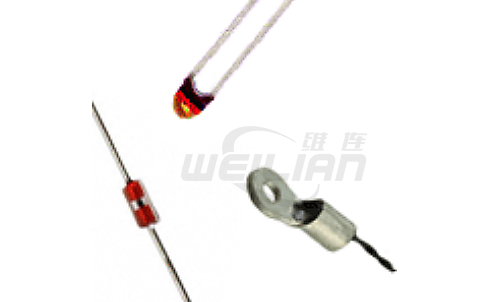

Thermistor
What is thermal resistance?
Different thermist resistance thermistor is a temperature -sensitive resistor. They are usually used as temperature sensors. The thermal resistance of the term is the abbreviation of the words "heat" and "resistance". All resistors have a certain dependence on temperature, which is described by their temperature coefficients. In most cases, the temperature coefficient is minimized, but in the case of thermistor, the high temperature coefficient is achieved. Unlike most other resistors, thermistor resistance usually has negative temperature coefficients (NTC), which means that the resistance will decrease as the temperature rises. These types are called NTC thermistor. Thermistor with a positive temperature coefficient is called PTC thermistor (POSITIVE TEMPARATURATURATURARINE).
Thermistor definition
Thermal resistance is a resistor that significantly changes with temperature changes with temperature changes.
Thermal resistance type and application
Thermal resistance is usually ceramic semiconductor. In most cases, they are composed of metal oxides, which are dry and sintered to obtain the required shape factors. The types of oxide and additives determine their characteristics. For NTC thermistor , common materials include cobalt, nickel, iron, copper and manganese. For PTC thermistor, commonly used materials include and lead.
NTC thermistor
The NTC type needs to be used when the resistance changes in the wide temperature range. They are usually used as temperature sensors in the range of -55 ° C to 200 ° C, although they can be used to measure lower or higher temperatures. Their popularity can be attributed to their rapid response, reliability, stability and low prices.
PTC thermistor
The PTC type needs to be used when the resistance of the resistance at a certain temperature. They show the sudden increase in resistors higher than defined temperatures, called switch temperature, transition temperature, or centered temperature. The most common switching temperature range is 60 ° C to 120 ° C. They are usually used for self -adjusting heating elements and self -reset current protection.
| NTC | Positive temperature coefficient | |
| Temperature coefficient | negative | Positive |
| Metal Oxide | Cobalt, nickel, iron, manganese, titanium | 钡, lead, titanic acid 锶 |
| Common temperature range | -55 ° C to 200 ° C | 60 ° C to 120 ° C (switching temperature) |
| Application | Temperature sensing and control, surge current restrictions, flow measurement | Overcurrent protection, self -regulating heater, delay, liquid level sensing |
Heat -sensitive resistance package
There are multiple encapsulation types and sizes to choose from. The radial lead is the most common and is mainly composed of epoxy resin. For applications in harsh environments, glass packaging is more suitable. Integrated packaging, such as threaded housing, wiring, or probe, so that it is easy to install. The following figure shows some examples of useful bag types.
Heat resistance packaging < /u> Example

Thermal resistance symbol
Use the following symbols according to the IEC standard.


